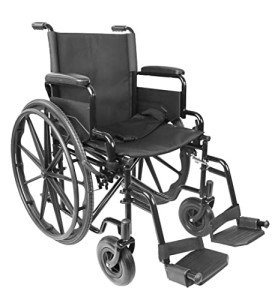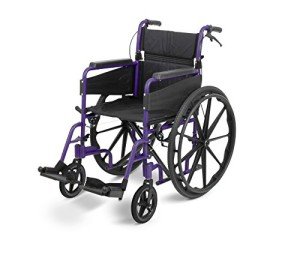
6
апреляYou'll Never Be Able To Figure Out This How To Use A Self Propelled Wheelchair's Secrets
 how to use a self propelled wheelchairs for sale uk propelled wheelchair (simply click Funsilo)
how to use a self propelled wheelchairs for sale uk propelled wheelchair (simply click Funsilo)
Wheelchairs allow mobility and independence for people with limited walking abilities. It is crucial to know how to use your wheelchair and let a doctor/occupational therapy help you with this.
Many people move their wheelchairs using a technique known as "wheelies". This requires the client to have hands that are large enough to span these rims and have a strong grip to propel them forward.
Seating Position
self propelled wheelchairs-propelled wheelchairs allow you to move independently and not depend on others. For many it is the only way to regaining or maintaining their independence. It also reduces the risk of injury to the person who is using the wheelchair as well as those surrounding them.
 It is important that the chair seating position is comfortable for the wheelchair user. There are several things that can be done to make sure this is the case. First, the footplates need to be in the correct place. Release the footrest catch and swing them around until they are in front of the chair. Make sure that the wheelchair's feet are seated comfortably on the footplates.
It is important that the chair seating position is comfortable for the wheelchair user. There are several things that can be done to make sure this is the case. First, the footplates need to be in the correct place. Release the footrest catch and swing them around until they are in front of the chair. Make sure that the wheelchair's feet are seated comfortably on the footplates.
The height of the footrest may require to be reduced, particularly for those who are hemiplegic (one side of the body is more affected than the other). The footrests may increase the pressure on the seat bone and cause pain and discomfort if they are too high.
A forehead strap will assist the wheelchair user to stay straight, particularly if their neck muscles are weak. These can be fitted to wheelchairs with no headrests by a specialist in mobility.
It is essential that if the chair has armrests, they are in a good position so that the user of the wheelchair does not hit them with their arms when they move. To achieve this it is recommended to choose a wheelchair with swing away or removable armrests. Alternately, foam inserts can be cut and glued to the back of the armrest to raise them up to a more comfortable position.
A cushion that is well-fitted for a wheelchair is crucial, especially for those who are at a high risk of skin breakdown or pressure sores. Pressure ulcers are caused when the skin rubs against the wheelchair surfaces. In certain instances the skin may become dry and irritated from sitting in the same position for a long period of time. It may also cause blisters. Repositioning the wheelchair regularly will reduce the risk of pressure ulcers.
Pushing
Self-propelled wheelchairs allow users to move themselves independently and without the need for a person to push them. They are much more maneuverable than other wheelchairs self propelled because they have larger rear wheels and pushing handles fitted to their sides. This lets them travel across a range of surfaces without having to worry about tripping or getting stuck on obstacles like curbs or steps that are small.
Be cautious not to grip your chair handle too tightly as you move forward. Applying too much pressure can cause your hands to become cramped and reduce the amount of force you can apply. You can also use wheelchair gloves or handrim covers that have grip material in the palms. This will help improve the position of your hands and increase the force you can use.
Keep the front casters free of any debris, like sticks or rocks. This material could make it difficult to maneuver your wheelchair as you think. It could cause an impairment in control and/or injury. If your seat-to-floor height is very high, you may think about adding extra padding on the front casters.
It is recommended that a caregiver pushes the wheelchair to assist you climb a steep hill or a small step. If you'd like to accomplish this independently, you will require additional training and experience under the supervision of medical professionals. It is important to position the wheelchair perpendicularly (directly) towards the curb or with small steps and place the front tires close to the edge.
When you are pushing up a slope, it is essential to have a clear area ahead of you so that you don't run into other people. You will gain speed quickly if you don't leave enough space ahead of you. You may also collide with another person. To help you avoid this make sure you are aware of those in the vicinity when you are on a slope. Also, have a friend or carer prepared to help you in the event you begin to fall out of your wheelchair.
Braking
To ensure that the wheelchair is secure users must perform the braking and steering actions in a specific manner. This is particularly crucial when on a slope as it is possible for the chair's center of gravity to shift forward in the event that the braking mechanism is not executed in a controlled manner.
When pushing a wheelchair self propelled always make sure that the hand is in the right position, with the ideal being at 10 hours (10:00) on the wheel, and then releasing at two o'clock (2:00). This ensures that the majority of the body weight remains on the rear wheels, allowing for the smoothest, easiest push. It also helps to maintain the integrity of the shoulder wrist, elbow and elbow joint.
To turn right in a wheelchair move forward on the right rim and then pull back the left hand rim. This will turn the wheelchair left and allow you to remain seated. Wheelchairs are also equipped with anti-tip bars to stop the wheelchair from tipping over backwards.
Consult the user guide that is included with your wheelchair to determine the most safe slope your chair can travel. In some circumstances the wheelchair might need to be temporarily dismounted and operated by hand to get over steep gradients. If this is the case, it is advised to seek help from an individual or a relative and follow the instructions in the User Guide.
It is recommended to use ramps while negotiating kerbstones. This reduces the pressure on the front and back tyres and allow you to go faster over the kerb. The kerb climber feature on many manual wheelchairs can assist with this process by increasing the capacity of the wheelchair by about 10cm (4").
To stop a wheelchair simply release the brakes and push the joystick towards you. This will release the clutch motor. The wheelchair will then come to a halt and allow you to take off the footrests, set up walking aids and safely get out of the chair.
Steering
The user is accountable for steering and controlling the wheelchair. There are a variety of ways to do this, depending on the wheelchair structure and the additions like armrests, phone/drink holders or even a drink holder. Wheelchairs are available in a variety of sizes and shapes. The size of the front casters, as an example can determine the kind of terrain a wheelchair can handle. Small casters let a chair move faster but they struggle on rough surfaces like grass or cobblestone. Large casters will allow wheelchairs to travel on rough surfaces but it won't be nearly as fast.
On smooth and level surfaces the wheelchair user should push the wheels using both hands to keep momentum. This can be done by gripping the rims of the hand and pushing them with both hands. The hands shouldn't be wrapped around the hand rims as this could cause injuries and cause over-corrections (fish-tailing) when the chair turns a corner. It is advised that the wheelchair user try leaning back and forward to different levels to determine an optimum balance between lean and control.
For more difficult or difficult terrain, the wheelchair user should plan ahead and anticipate obstacles. The user of the wheelchair should look over both shoulders to avoid hitting objects or other people. If they are traveling with a caregiver they should be ready to assist if they need to. If the wheelchair is going to be used on an inclined slope, it must be assisted or driven by a caregiver until the user is familiar in this.
To turn the wheelchair, the user must pull one hand rim forward while pushing the other rim back. It is recommended to practice on a smooth, flat surface prior to moving onto other surface. The movement can be uncomfortable, and the wheelchair may fall over if not mastered. If the wheelchair has power assisted self propelled wheelchair wheels, this can reduce some of the pressure off the user, making turning much easier. It is essential to be aware that untrained strangers tend to push a wheelchair user against their will. The user of the wheelchair should cover the handles or fold them back.
Отзывы